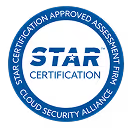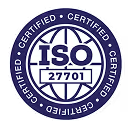The professional services world is caught in the perfect storm. On one hand, ever-evolving forms of technology are upending practices that have been a staple of the industry for decades, threatening to dismantle existing business models for good. On the other, margins are going down, despite PS teams hiking their prices.
Before addressing these larger concerns, it’s imperative to see if your team is in alignment with your org’s overall objectives. One powerful tool for fostering alignment and success is an internal charter—a document that defines your team's purpose, goals, and operating principles. In this article, we'll explore how to create a comprehensive charter and evangelize it to ensure your team is working in lockstep towards common objectives.
Why create a leadership charter?
Before diving into the process, it's essential to understand the value of a leadership charter:
- Alignment: It ensures your team is working in lockstep towards common objectives.
- Clarity: It provides a clear vision and purpose for your team's activities.
- Accountability: It sets measurable goals and defines responsibilities.
- Communication: It helps articulate your team's value to the rest of the organization.
- Adaptability: It serves as a living document that evolves with your team and organization.
The 10–Step Process to Creating Your Charter
1. Start with your organizational purpose
Begin by understanding your company's overall mission and vision. As we often say within Rocketlane: It's not just about products having to start their vision from what customer experience should be, but even for the PS team, for our implementation team, for any services team, maybe you need to start from the customer.
For example, Rocketlane's stated mission is "To help PS teams and onboarding teams elevate their client delivery experience for both the internal team as well as for their customers."
2. Align with your values and brand
Identify your company's core values and brand attributes. These should inform every aspect of your charter. For instance, at Rocketlane, our core values include:
- Customer centricity
- Ownership
- Empathy
- Innovation
Our brand attributes are:
- Modern
- Thoughtful
- Fast
- Professional
- World–class
3. Define your objectives and outcomes
Set clear, measurable goals for your PS team. These should be specific to your current stage and needs. For example, Rocketlane's objectives include:
- Reducing time to value
- Standardizing service delivery
- Building trust faster in the customer journey
4. Validate internally
Get buy–in from your team, partners, and customers. Great ideas can come from anywhere: your colleagues or your customers and sometimes even well-wishers. Therefore, it would be prudent to ensure that your customers and team members are on the same page when it comes to setting the right objectives for each stage of the journey.
5. Play to your market strengths
Identify what sets your PS team apart. This could be flexibility, ease of setup, or depth of customization. Ensure your charter reflects and reinforces these strengths.
6. Craft your vision statement
Synthesize your purpose, values, and objectives into a concise vision statement. The purpose of the vision statement is not to come with a grandiose declaration of what the team ought to do, but a set of phrases that captures the essence of the team’s orientation and attributes. Here’s an example:
"Our vision is to standardize service delivery to help customers launch faster with our product, and to win customer confidence as trusted partners in achieving their services and onboarding goals."
7. Develop your charter
Your team charter should clearly spell out the following things:
- Purpose
- Scope
- Goals and objectives
- Roles and responsibilities
- Key activities and deliverables
- Required resources
- Stakeholders and alignment needs
- Performance metrics
- Governance practices
- Review and revision plans
8. Get CFO buy–in
In today's economic climate, it's crucial to get financial backing for your PS initiatives. Generally speaking, PS tends to be the most expensive part of a software company. Professional Services teams have the lowest margins. This is all the more reason to avoid being a cost center, and instead turn into a profit-center that contributes significantly to the bottomline.
9. Communicate and evangelize
Share your charter widely within your organization. Ensure everyone understands how their work ties back to the charter's goals. Drift, one of our customers had implemented a charter and found that it shows the team how initiatives tie to the charter, so that they know that it's a continuous process that always stays on top of people’s minds and is always guiding the business.
10. Review and iterate
Treat your charter as a living document. Review it regularly (at least once a year) and update it as your team and organization evolve.
{{download-form}}
Implementing your charter
Once you've created your charter, consider these tips for effective implementation:
- Make it accessible: It has to feature prominently within your org. Make sure there are physical and digital copies that are readily accessible.
- Use it in decision–making: Refer to the charter when faced with tough choices or challenges.
- Encourage feedback: Make it a living, breathing part of your team's daily work.
- Integrate with performance reviews: Use it as a framework for assessing progress and setting individual and team objectives.
- Tie initiatives to the charter: Help team members understand how their work contributes to larger goals.
Aligning with the larger organization
Remember that your PS charter should align with your company's overall goals and vision. If you're going to get alignment on that charter, you are going to have a dialog with the CEO, the CFO, and a few other C-suite execs to ensure that all of you are on the same page. Because ultimately, we all know we are working towards better customer outcomes."
Wrapping up
Creating and implementing a leadership charter for your professional services team is a powerful way to drive alignment, clarity, and success. By starting with the customer experience, aligning with organizational goals, and continuously refining your approach, you can create a charter that not only guides your team but also demonstrates the value of professional services to your entire organization.
The late, great Steve Jobs once said, "You've got to start with the customer experience and work backwards to the technology." Apply this principle to your PS charter, and you'll be well on your way to delivering exceptional value to both your customers and your company.












